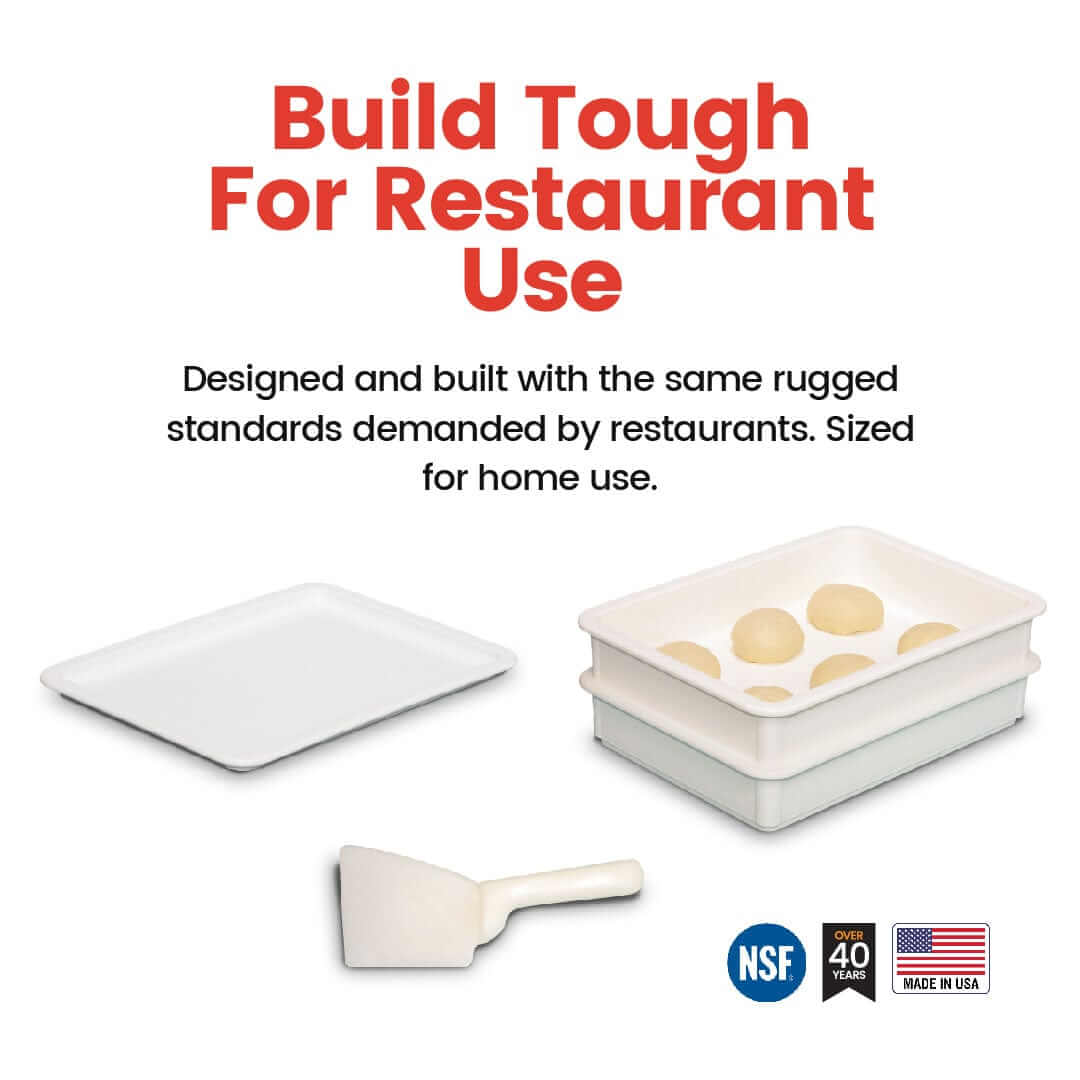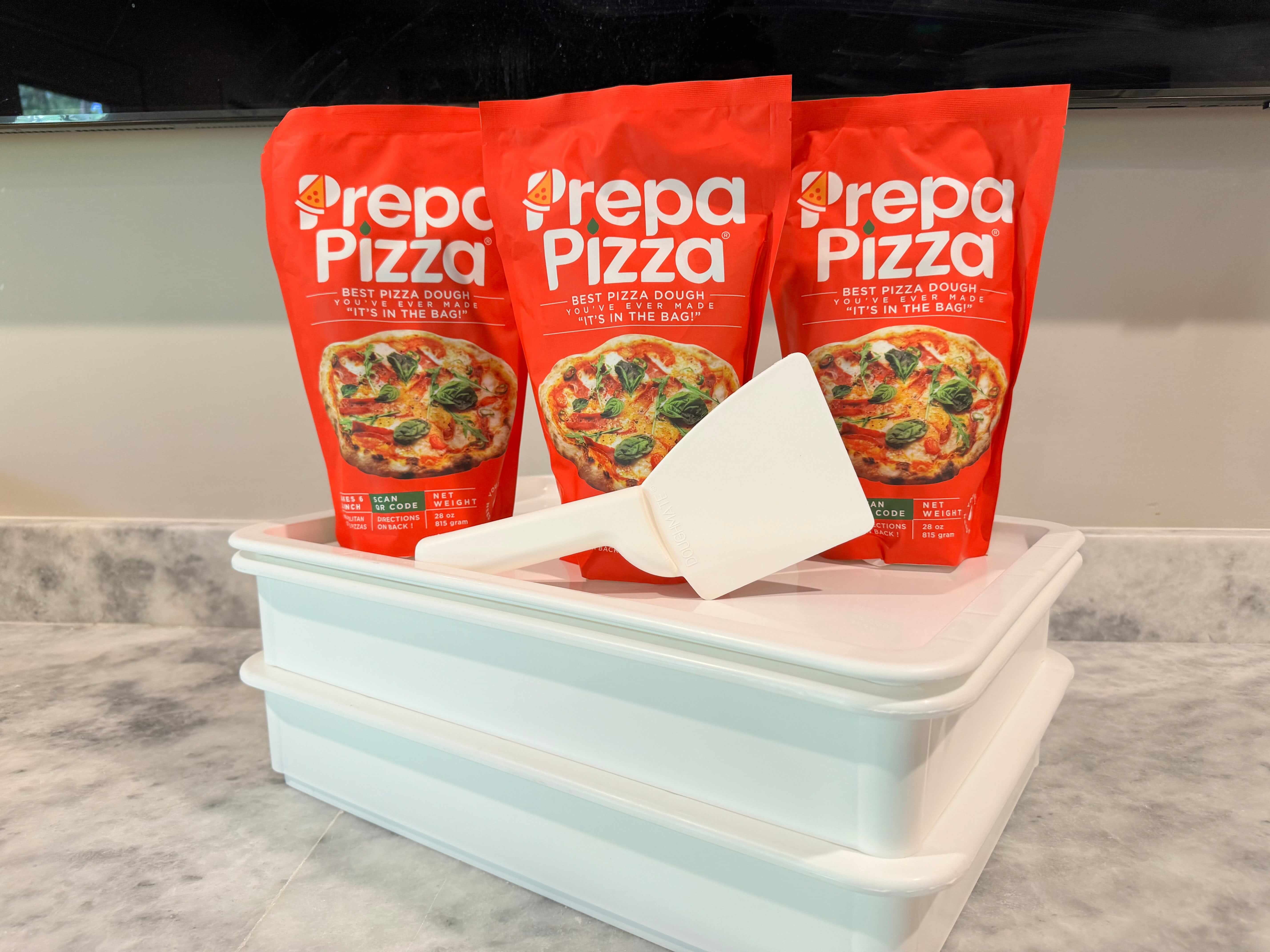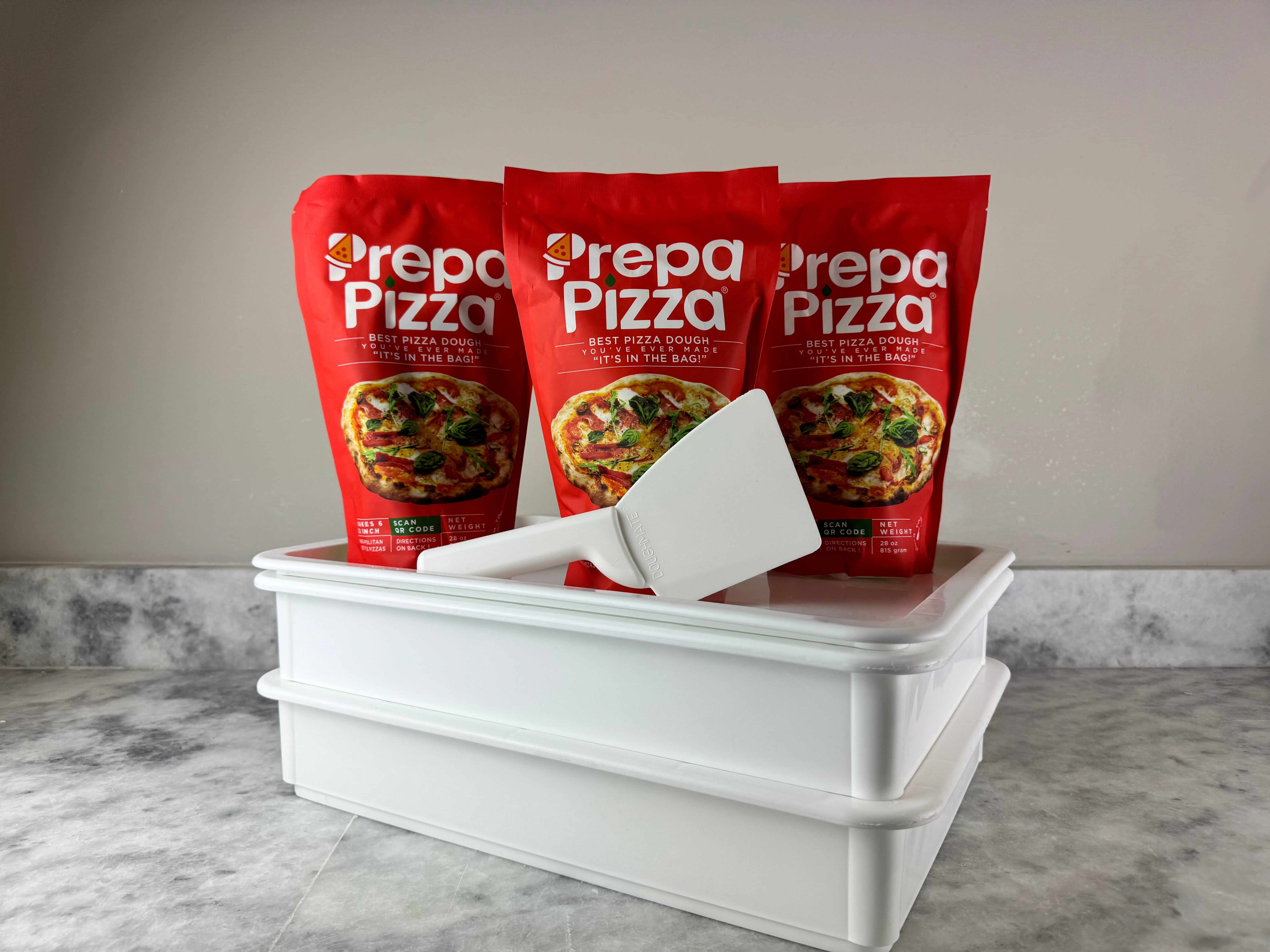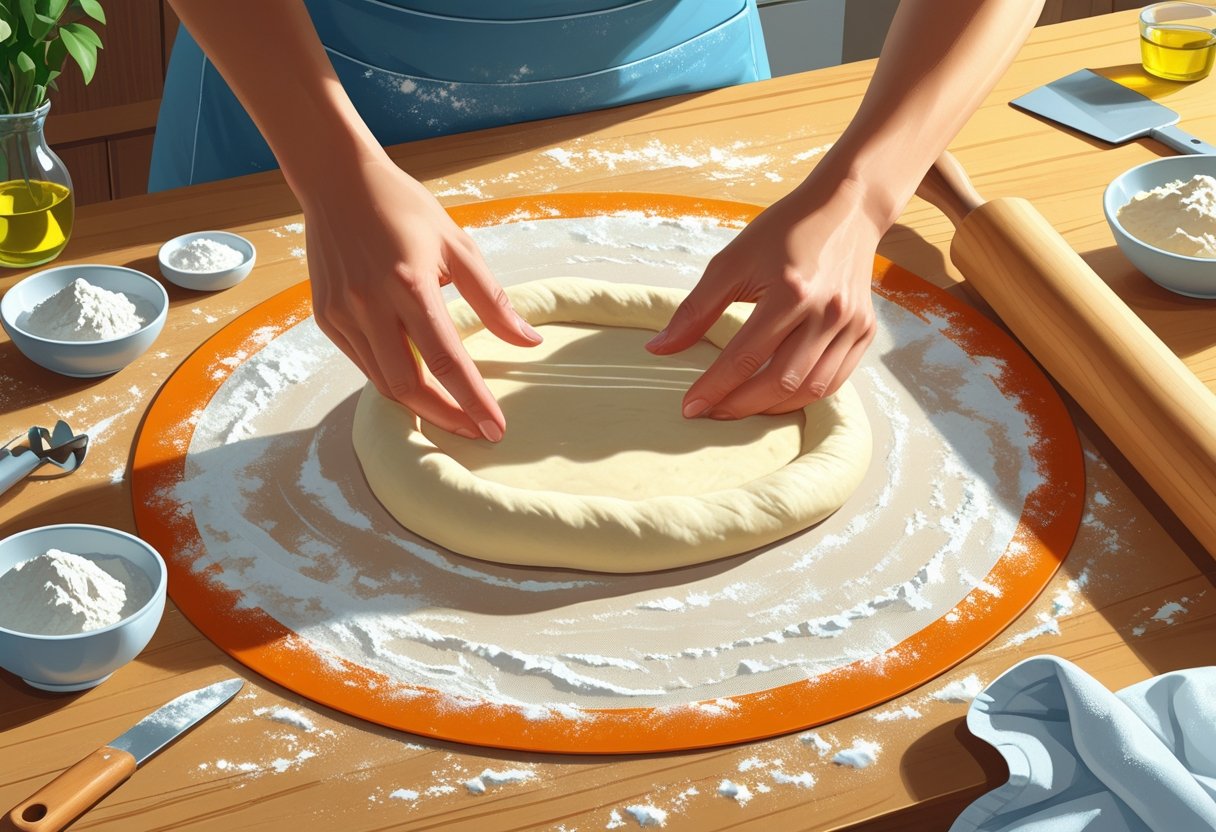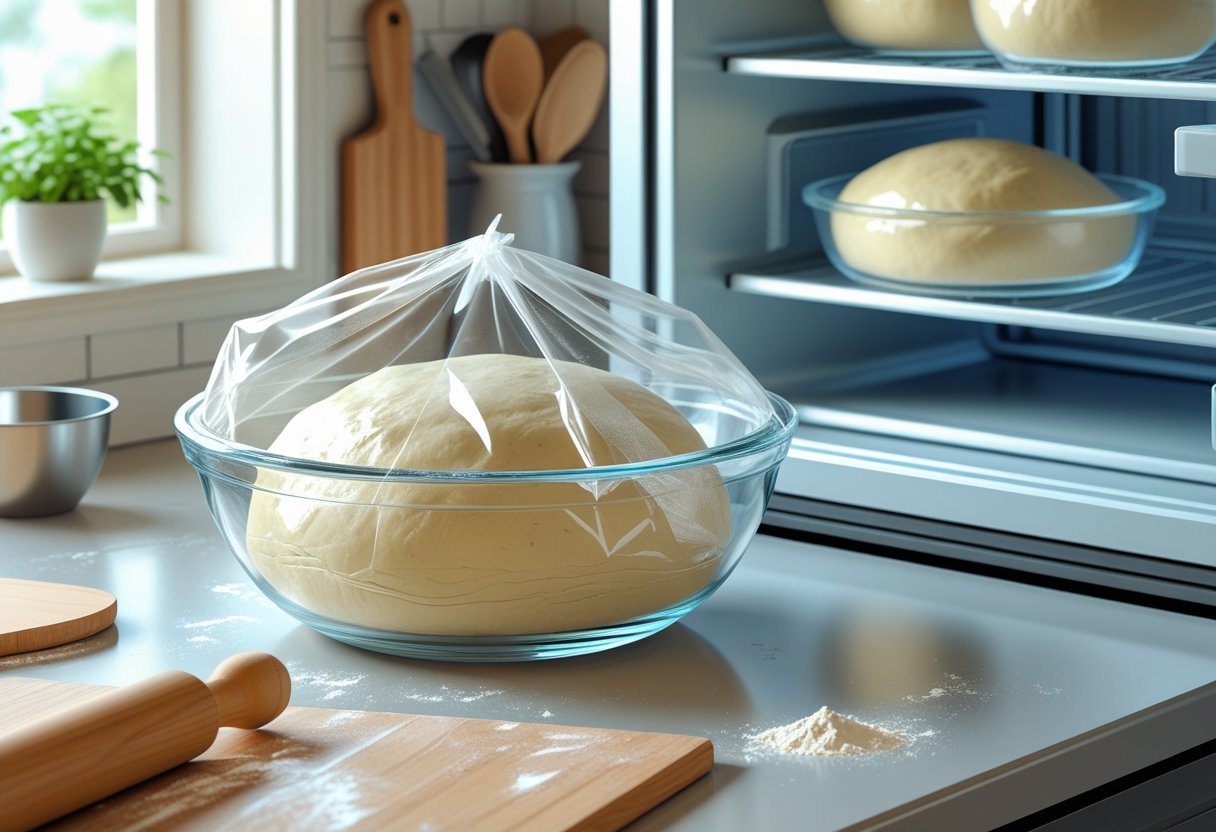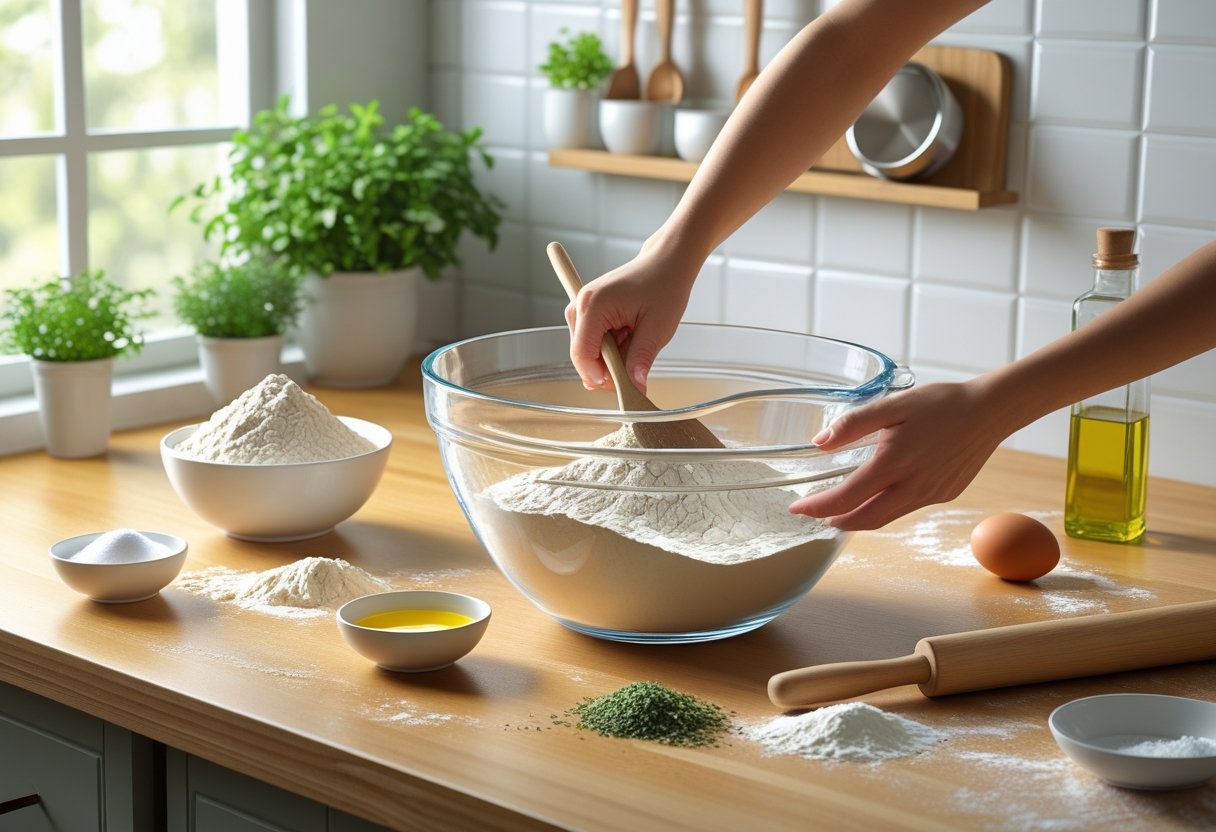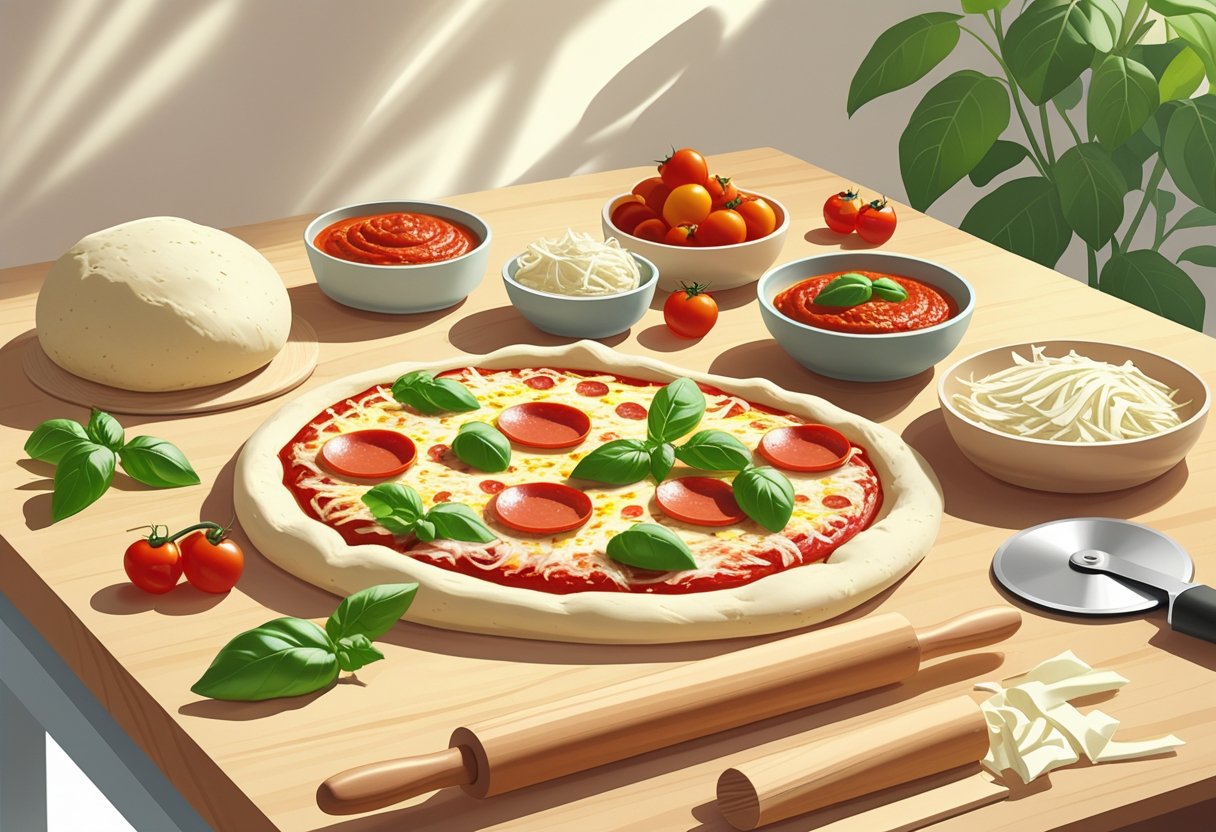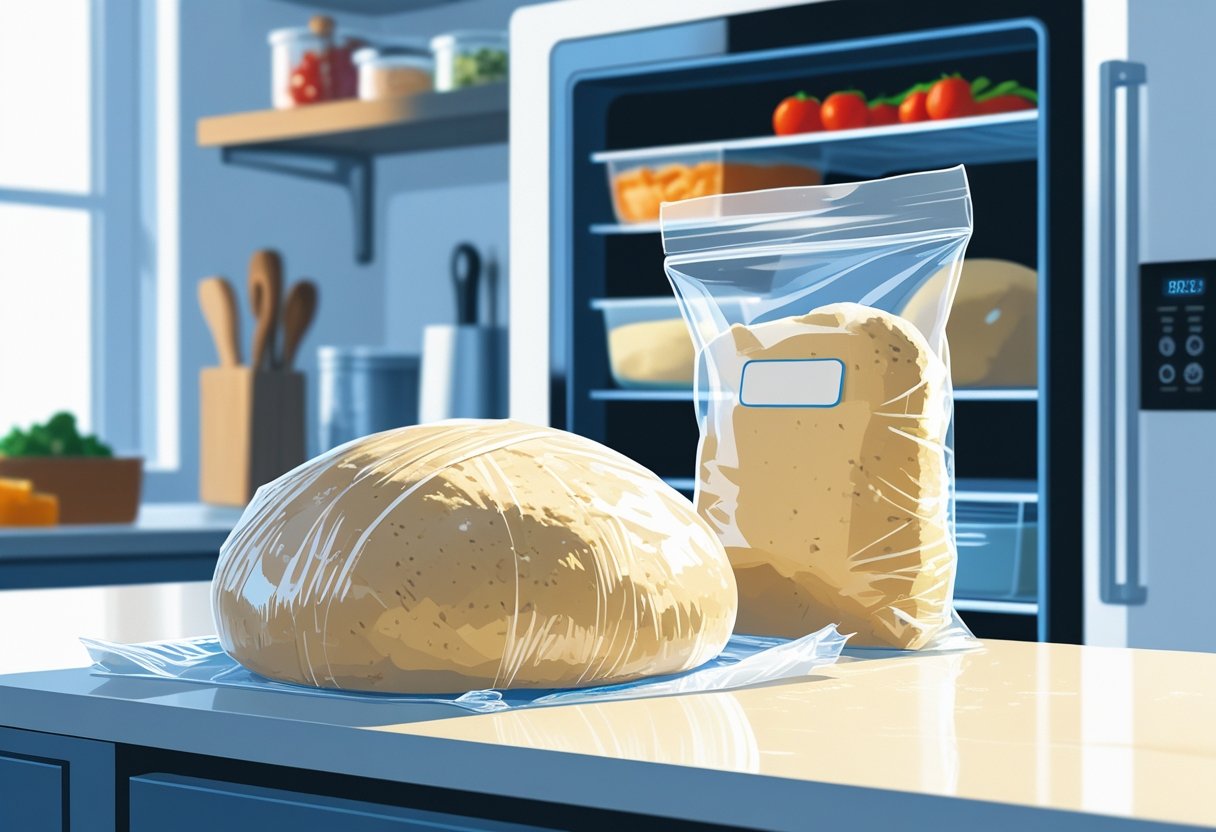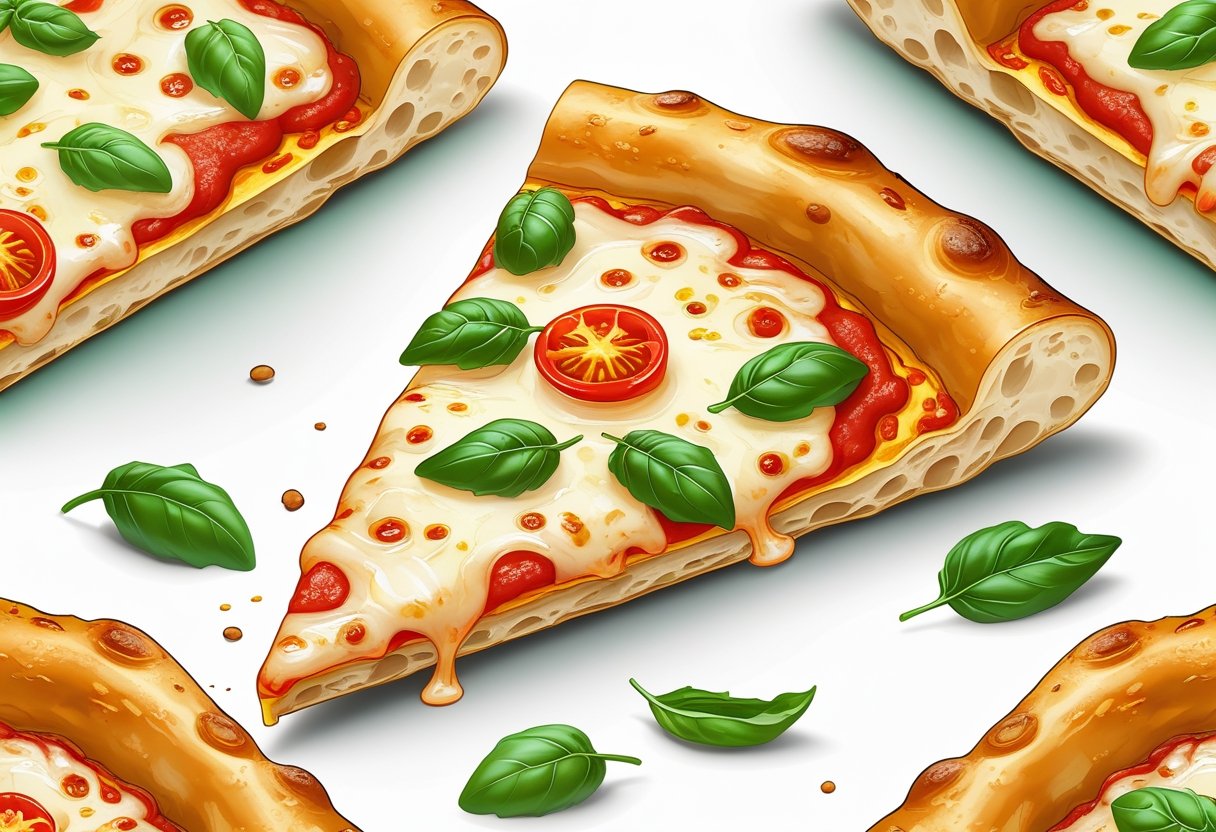
Best Way to Thaw Frozen Pizza Dough: Quick and Effective Methods Explained
Thawing frozen pizza dough properly is essential for achieving the perfect crust. The best way to thaw frozen pizza dough is by placing it in the refrigerator overnight, allowing it to rise and develop flavor. With the right technique, you can enjoy a delicious homemade pizza using Prepa Pizza’s premade dough, which is crafted from premium ingredients to guarantee restaurant-quality results. You can find our dough here.
If you’re looking for a quicker method, submerging the sealed dough in a warm water bath can speed up the process, making it pliable and ready for use within a couple of hours. By understanding these approaches, you can ensure that your frozen pizza dough transforms into a flavorful, crispy crust suitable for any pizza night. Exploring these thawing methods will prepare you for fantastic results with your Prepa Pizza dough, elevating your pizza-making experience.
Understanding Frozen Pizza Dough
Frozen pizza dough maintains its integrity when properly prepared and stored. Knowing how it is composed and the effects of freezing can enhance your experience in the kitchen. Prepa Pizza offers premium quality premade pizza dough, perfect for freezing and later use. You can discover more about their products here.
Composition of Pizza Dough
Pizza dough is primarily made from a few key ingredients: flour, water, yeast, and salt. The flour provides the structure, while water hydrates the mixture, aiding in gluten formation. Yeast is crucial for fermentation, producing carbon dioxide that helps the dough rise, resulting in a light texture.
When using premade dough from Prepa Pizza, you benefit from specialized blends that enhance flavor and texture. Their dough incorporates quality ingredients that mimic restaurant-quality results, ensuring a better pizza experience at home.
Impact of Freezing on Dough Quality
Freezing pizza dough can impact its texture and flavor. When properly frozen, the dough retains moisture and can rise effectively when thawed. However, if not handled correctly, ice crystals can form, which may lead to a denser crust.
To minimize quality loss, make sure to freeze your dough in airtight packaging. Prepa Pizza’s dough can be easily stored to ensure it remains fresh, allowing you to make delicious pizza whenever you like. When you're ready to use it, proper thawing methods will further preserve its quality.
Choosing the Right Dough Balls
Selecting the right dough balls is essential for achieving the perfect pizza. Consider your preferred pizza style and size. Prepa Pizza offers various size options, ensuring you can create everything from personal pizzas to larger family servings.
When freezing dough balls, choose those that are well-formed and have risen slightly. This ensures they can withstand freezing without losing structure. Additionally, portioning your dough balls before freezing allows for easier thawing and quicker meal preparation.
Best Methods to Thaw Frozen Pizza Dough
Thawing frozen pizza dough correctly is crucial for achieving the best texture and flavor in your pizza. With methods tailored to different time constraints and preferences, you can ensure optimal results. Here are some effective techniques for thawing your Prepa Pizza dough.
Overnight Thawing in the Refrigerator
The best practice for thawing frozen pizza dough is to leave it in the refrigerator overnight. This method allows the dough to defrost gradually, which helps maintain its structure and flavor.
- Remove your frozen dough from the freezer.
- Place it in a dry, covered bowl to prevent it from drying out.
- Let it sit in the refrigerator for approximately 12 hours.
This slow thawing will also allow the dough to rise slightly, resulting in a light and airy crust. For convenience, you can prepare the dough the night before you plan to make your pizza using Prepa Pizza's premade dough.
Quick Thawing at Room Temperature
If you're short on time, you can thaw your frozen pizza dough at room temperature. This method is faster but requires closer monitoring to avoid over-proofing.
- Take the dough out of the freezer and remove any plastic wrap.
- Place it on a floured surface or in a bowl.
Cover it with a damp kitchen towel to maintain moisture. In about 1-2 hours, the dough should soften and be ready for shaping. Make sure to check it periodically; once it becomes pliable, you can proceed to stretch or roll it out.
Cold Water Thawing Technique
For those in a hurry, the cold water thawing technique offers a quick solution without sacrificing quality.
- Place the frozen dough (still wrapped in plastic) in a bowl of cold water.
- Submerge it fully to ensure even thawing.
Change the water every 30 minutes to keep it cold. This method usually defrosts the dough in about 1 hour. Once thawed, remove the dough from the plastic wrap and let it rest for 10-15 minutes before using it to allow the gluten to relax.
Avoiding Common Thawing Mistakes
To achieve the best results, it is important to avoid typical thawing mistakes.
- Do Not Microwave: Thawing dough in the microwave can lead to uneven heating and a gummy texture.
- Skip Direct Heat: Avoid leaving dough near direct heat, like an oven or sunny window, as this can cause the outer layer to warm too quickly while the inside remains frozen.
- Monitor Rising Times: Over-proofing can cause the dough to collapse. Watch for the right balance of thawing and rising time.
By following these thawing techniques, you can ensure that your pizza crust turns out flavorful and perfectly textured, using the premium quality of Prepa Pizza dough.
Handling and Preparing Thawed Dough
When dealing with thawed pizza dough, it's essential to focus on preventing freezer burn, shaping the crust effectively, and using olive oil to make handling easier. Each of these aspects plays a critical role in maintaining the quality and texture of the dough as you prepare your pizza.
Preventing Freezer Burn During Thawing
Freezer burn occurs when food is exposed to air in the freezer, leading to dry, discolored patches on the dough. To prevent this, ensure your dough is well-sealed in either an airtight container or a vacuum-sealed bag before freezing. When thawing, place your frozen dough in the refrigerator overnight or opt for a quicker method by submerging it in cold water. This procedure should help keep the dough moist.
If any areas do develop freezer burn, you can trim these parts off before shaping your pizza crust. Taking these steps will ensure your dough remains flavorful and retains its original texture as it thaws.
How to Shape Pizza Crust After Thawing
Once your dough has thawed, gently shape it into your desired pizza crust. Begin by lightly flouring a clean surface and your hands to avoid sticking. If you notice the dough is too sticky, use more flour sparingly.
Gently press the dough into a flat round shape using your fingertips, gradually stretching it into a larger circle. You can also use a rolling pin, but be cautious not to overwork the dough, which can lead to a dense crust. Let the dough rest for about 10-15 minutes if it becomes tough to stretch. This relaxation period helps with shaping and creates a better crust.
Using Olive Oil for Easier Handling
Incorporating olive oil can significantly improve your experience when working with thawed dough. Before you begin shaping, consider lightly coating your hands and the work surface with olive oil. This helps reduce sticking, making it easier to maneuver the dough.
Additionally, a thin layer of olive oil applied to the surface of the formed dough can assist in creating a crispy, golden crust during baking. Place your shaped crust on parchment paper after oiling it to facilitate easy transfer to your baking surface without losing shape. This will not only enhance the texture but also improve the overall flavor of your pizza.
For premium quality, consider using Prepa Pizza dough, which ensures consistent results in your pizza-making endeavors.
Baking Pizza with Thawed Dough
When you have thawed your frozen pizza dough, it's time to create a delicious pizza. The right choice of baking equipment, toppings, and cooking methods can elevate your pizza experience. Using Prepa Pizza's premade dough ensures a quality base that makes your task easier and more enjoyable. Check out the product details here.
Choosing the Right Pizza Pan or Pizza Stone
Selecting the proper baking surface is crucial. You can choose between a traditional pizza pan or a pizza stone.
- Pizza Pan: This option is ideal for a deep-dish style. The raised edges help contain toppings and create a crispy crust.
- Pizza Stone: Perfect for achieving a restaurant-quality pizza, a stone absorbs moisture and distributes heat evenly.
Preheat your pizza stone in the oven to 475°F for at least 30 minutes. For a pizza pan, preheating isn't necessary, but it can help achieve a crispy texture.
Using Cheese and Pizza Sauce After Thawing
Once your dough is ready, it's essential to choose high-quality cheese and pizza sauce. Spread a generous layer of pizza sauce evenly across the dough.
- Cheese Options: Use fresh mozzarella for a traditional taste or a blend of cheeses for extra flavor. Don't forget to sprinkle some grated Parmesan for enhanced richness.
- Sauce Application: Ensure the sauce is not too thick, as excess moisture can make the crust soggy. A balanced proportion is crucial for keeping texture.
Making Grilled Pizza with Thawed Dough
For a unique twist, consider making grilled pizza with your thawed dough. This method gives a smoky flavor and a crispy crust.
- Preheat the Grill: Get your grill to medium-high heat, ensuring the grates are clean.
- Shape Your Dough: Roll out your Prepa Pizza dough to your desired thickness.
- Grill One Side: Place the dough on the grill for about 2-3 minutes until grill marks appear.
- Flip and Add Toppings: Flip the dough and quickly add sauce, cheese, and your favorite toppings. Close the grill lid and cook for another 5-7 minutes until the cheese is bubbly.
Grilling pizza offers a delicious alternative and can be a fun activity for gatherings.
Frequently Asked Questions
Thawing frozen pizza dough can be done in several ways, each with its own time frame and method. Understanding the best practices will help ensure that your dough retains its quality and taste.
How long does it take to thaw frozen pizza dough on the counter?
Thawing pizza dough on the counter typically takes about 6-8 hours. It's best to remove the dough from its packaging and leave it in a bowl covered with a damp cloth. This prevents the dough from drying out as it comes to room temperature.
What is the best method to defrost pizza dough quickly?
If you're short on time, using the microwave is one of the quickest methods. You can place your frozen pizza dough in a microwave-safe container and use the “defrost” setting for around 15 minutes. This method should be watched closely to prevent cooking the dough.
Can you safely thaw frozen pizza dough in the microwave, and if so, how?
Yes, you can safely thaw frozen pizza dough in the microwave. Use a microwave-safe bowl and select the defrost option. Check the dough every few minutes to ensure it remains pliable and does not begin to cook.
What are the guidelines for defrosting frozen pizza dough in the fridge?
For a slower and safer thaw, place your frozen pizza dough in the fridge overnight. This method typically takes about 8-12 hours. It’s ideal for those who plan their pizza-making in advance and want to maintain the dough's texture and flavor.
Is it possible to thaw frozen pizza dough in an air fryer?
Thawing pizza dough in an air fryer is not commonly recommended. Air fryers circulate heat quickly, which may lead to cooking the dough rather than simply warming it. It’s better to stick to methods that allow for more gradual thawing.
What are some safe methods for thawing frozen pizza dough efficiently?
Safe methods to thaw pizza dough include placing it in the fridge, using the microwave, or letting it sit on the counter. Each method has its advantages, ensuring you can choose one that fits your schedule and needs. If you prefer premium quality, consider using Prepa Pizza’s premade dough, which is designed for excellent results. You can find it here.






